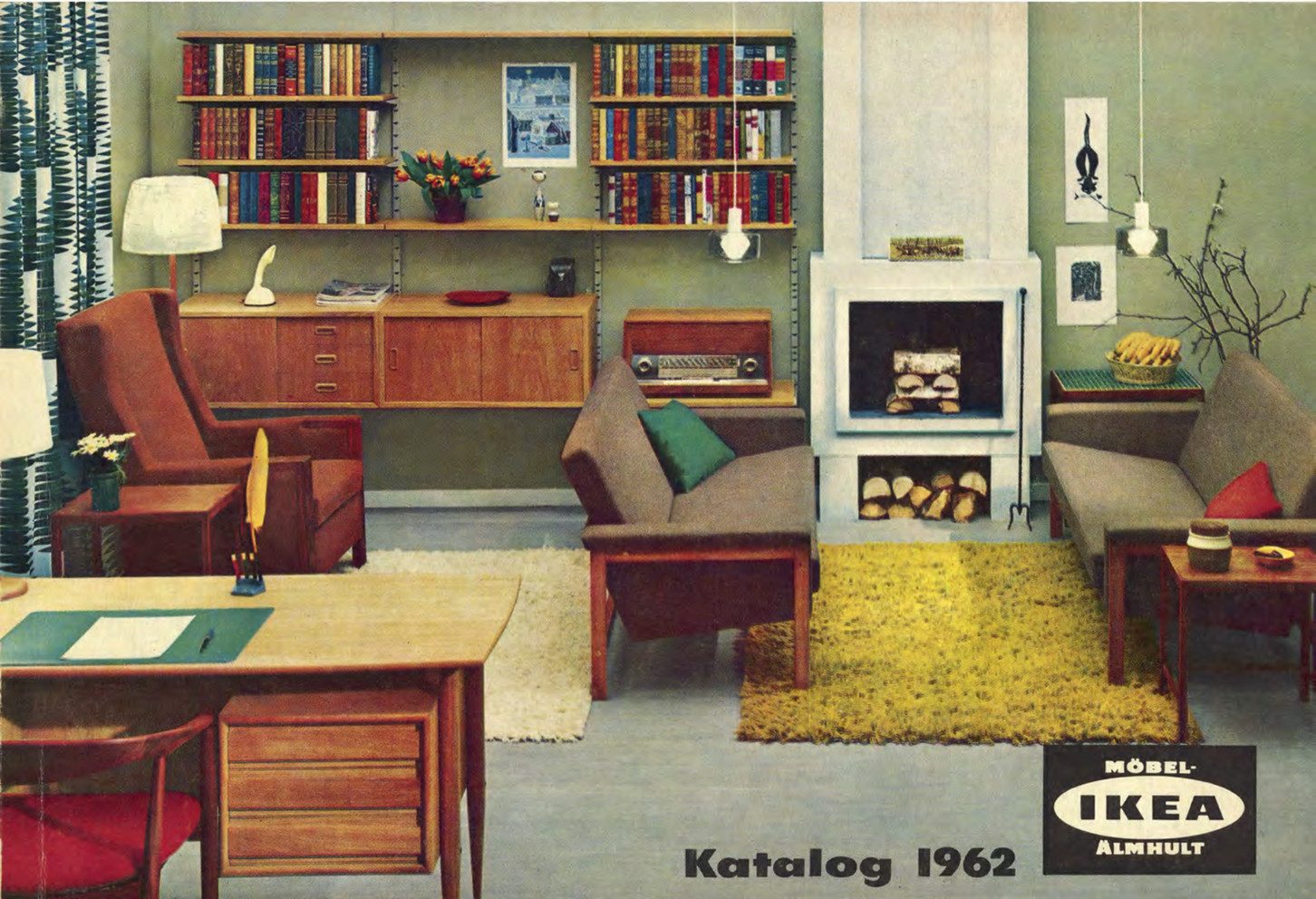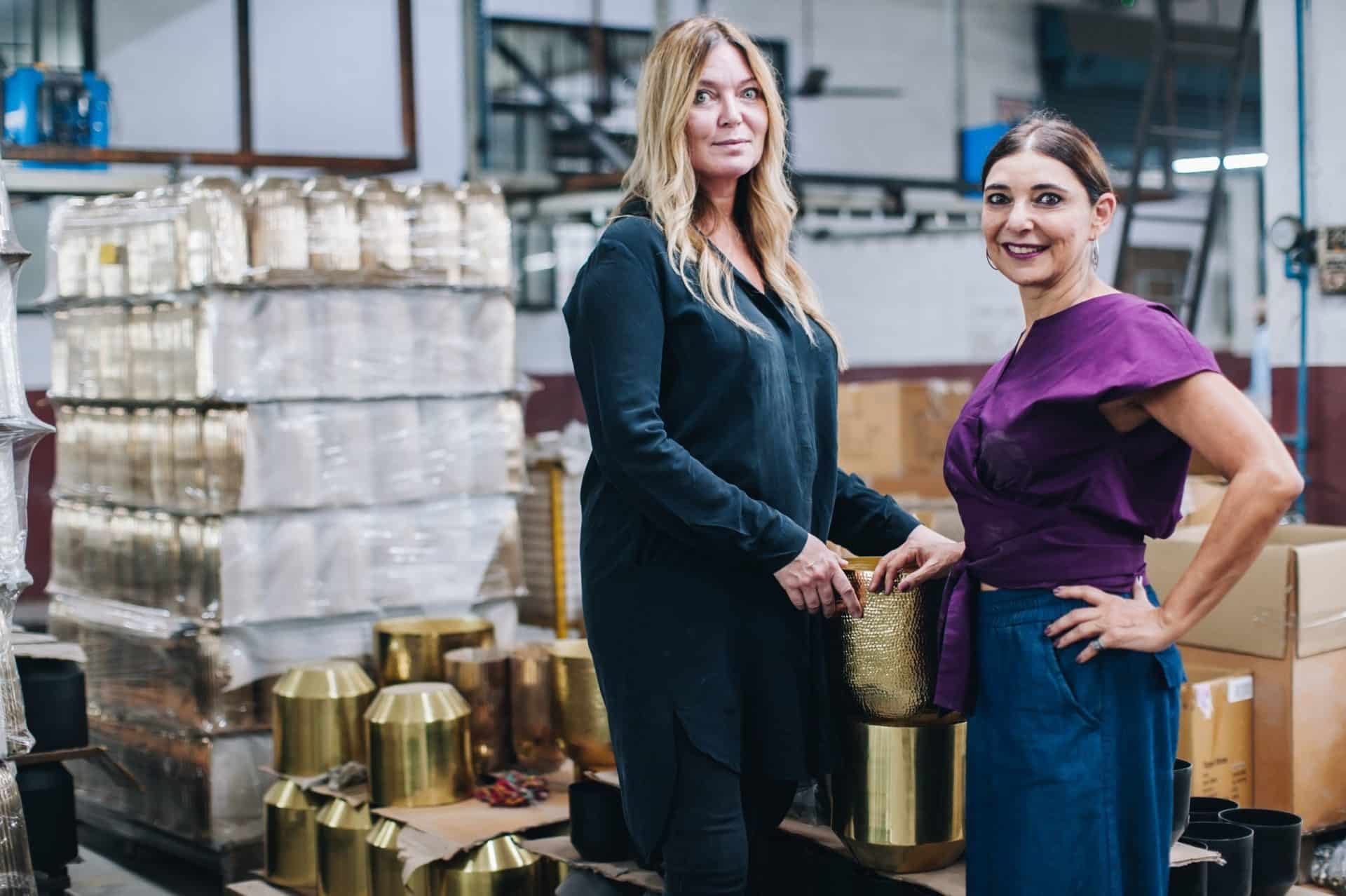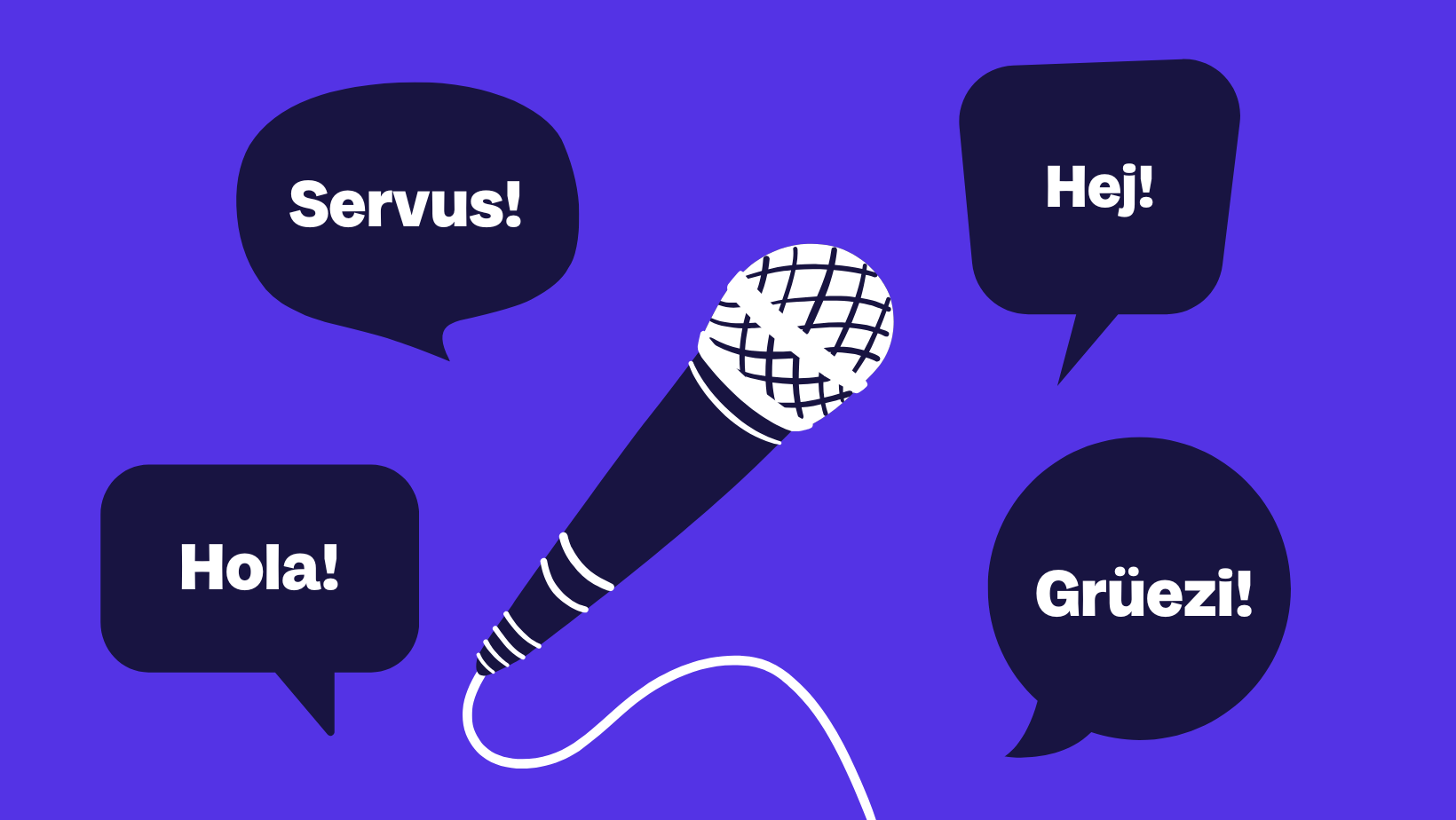Storytelling Close-Up IKEA: Every piece of furniture is a story
What is blue and yellow on the outside and equipped with BILLY, IVAR, Köttbullar and a whole Småland on the inside? That’s correct, IKEA. Or in long form: Ingvar Kamprad, who grew up on the farm Elmtaryd, originally from the small town of Agunnaryd. Since its founding in 1943, the world’s largest household furniture brand has achieved such cult status that a few keywords are all it takes to solve the riddle. The popularity is due to the unbeatable prices and products. But even more powerful are the stories that surround the company. IKEA uses the power of storytelling in every conceivable form of communication: visually in the catalogue, tangibly in the shop or emotionally in the well-known TV campaigns. Regardless of the channel, we are literally left with the desire to completely overhaul the interior design at home and redecorate everything.

Visual product storytelling: From the catalogue to the shop
The founding history of the furniture company alone, filled with trials and successes, is enough to fill books – or a museum, which can be visited both in Älmhult, Sweden, and on the Internet. Ingvar Kamprad was a visionary who revolutionised the furniture industry from the bottom up. The entrepreneur reformed the idea of product catalogues and store concepts, established completely new design principles and devised new ways of constructing furniture. And each of these innovations tells its own story.
Until the 1950s, a product catalogue consisted solely of what it literally said it contained: Products. But Ingvar Kamprad took a newer, modern approach. For his IKEA catalogues, the entrepreneur used the power of visual storytelling and for the first time integrated the sales items into shooting sets such as living rooms or bedrooms. What seems completely normal for us today was an absolute novelty at the time and provided an additional boost for the brand.

A trip to IKEA is not just a shopping trip. The big blue and yellow building block offers a shopping concept that certainly doesn’t occur a second time. In fact, the showrooms, which are based on home interiors containing all kinds of furnishing ideas, have been in operation since 1953. When the entrepreneur realised in the 1960s that hungry customers buy less, he opened the IKEA restaurants, which still remain today. A fire in the Swedish flagship store led to the construction of self-service warehouses in 1970. These areas became very popular in just a few months and were then permanently incorporated into the store concept. Kamprad accepted every challenge he faced, overcame it and turned the challenge into a new opportunity – obviously with success.
A shopping trip at IKEA is much more like entering an unknown world. Visitors embark on their own hero’s journey through showrooms, furniture displays, self-service areas and often a stop at a restaurant. Along the way, they overcome challenges – such as finding the right kits in the warehouse – or meet allies – staff members who know where to find the parts they need – and celebrate victories. Finally, they return to their familiar world, their own homes. There, the shopping heroes can enjoy the elixir – the satisfaction of having raised their living circumstances to a new level – in peace.
Storytelling through collaborations: Connected to the environment with the World Surf League
While the eyes wander from KLIPPAN to IVAR to the BILLY shelf while strolling, many people are not even aware that quite a lot of storytelling potential has been drawn from the products themselves. With the introduction of the “Democratic Design” principle in 1995, the company developed a tool that sets out the principles of furniture production at IKEA. Five dimensions must be balanced in the development process: Form, function, quality, sustainability and low price. Sarah Fager, Senior Designer at IKEA Sweden, explains these standards as follows:
“The form is for beauty, it’s what attracts the eye, and the object has to be functional, otherwise it won’t be used. When objects and materials last over time, that’s quality. Being mindful of resources is something that has been with us since the start. We don’t like complicated solutions and wastefulness, it’s bad for everyone. Part of sustainability is about using exactly the right materials for the function, and using them sparingly, but sustainability also means taking responsibility all the way through a product’s life.”
Especially with regard to the aspect of sustainability, IKEA was well ahead of its industry at the time – and still follows this approach today. This principle now goes beyond democratic design and is particularly evident in the collaborations that the company enters into with brands, designers and even more unusual partners. One of these is with the World Surf League. The collaboration has been established since 2019, and the jointly designed product line was launched this year. The KÅSEBERGA collection aims to encourage people to live in harmony with nature and to use recyclable, natural materials.
This cooperation is accompanied by an eleven-minute film that explains what IKEA has in common with surfers and their love for nature. In this campaign, viewers are also led into an unfamiliar world where they get to know Kassia, Rob and various decision-makers at IKEA. The company takes on the mentoring roles the architect and the muse. Together with the surfers, who are also designers, solutions are presented and inspiration offered on how to live close to nature in one’s own living space. At the end of the clip, there are various pieces of furniture inspired by surfing and a deeper emotional understanding of the need to establish a more sustainable lifestyle.
There are plenty of stories like this on the IKEA website. Each cooperation and collaboration is accompanied by a blog post, the partners are introduced in detail and the intention is explained. The brand collaborations include LEGO and adidas. A fragrance line was created with the London designer Ilse Crawford. And with Sonos and Spotify, music systems and Bluetooth speakers were added to the range.
Transparency in the sense of defined how-values – as well in B2B communication
IKEA’s product development is not only guided by the principle of democratic design, but also by the „how-values” that the company has defined for itself. There are a total of eight “key values” that are reflected in the entire company philosophy and communication:
- Awareness of costs
- Simplicity
- Togetherness
- Caring for people and the planet
- Innovate and improve
- Being different with meaning
- Taking and giving responsibility
- Leading by example
Many of these factors are already reflected in the way with whom cooperations are established and in the designs that are created. But the company also strictly follows these principles in its B2B business, where it also integrates the storytelling principle into the communication. It is noticeable that IKEA does not only concentrate on the beautiful sides of a story, but also talks about challenges. What obstacles have to be overcome in order to enter the Indian or South Korean markets? What are the hurdles in opening inner-city stores, for example in Paris, Hong Kong or the Canary Islands? And what is it actually like to work as a franchisee for IKEA?

The company shares interesting insights on its homepage, which can also be advantageous in B2B business. For potential business partners, the behind the scenes stories play an important role. IKEA communicates transparently and presents the target group as heroes at the centre of the stories which make the furniture company into what it is today. This approach is not only part of a very successful storytelling but also employer branding strategy. Furthermore, the brand provides additional transparency with the annual Sustainability and Life at Home Reports and lets the entire industry participate in the analyses. At the same time, the surveys pay tribute to the brand’s „how”-values: Setting an example and wanting to take on and hand over responsibility.
“Taste the future”: Storytelling in the recruitment process
Who doesn’t know the Köttbullar from IKEA? It is said that there are even people who relocate their lunch break to the restaurant of the nearest branch just for the little meatballs. IKEA has also taken advantage of the popularity and familiarity of the traditional Swedish dish for its recruitment campaign released in February 2022. Using moving images of 3D printers printing a plant-based version of köttbullar, the campaign aims to motivate tech talents to apply for a job at the company. Those who come to the job interview are of course allowed to try the printed meatballs.

The reason for the campaign: Before the end of the year, IKEA wants to employ 150 people who have a talent for technology as well as a huge amount of imagination and fantasy. The furniture store’s Köttbullar are already firmly anchored in the collective memory of consumers – will the printed version taste as good?
Storytelling in social media: Engaging the community, keeping everything else neutral
YouTube, Instagram, Twitter, Pinterest – IKEA uses pretty much all the usual social media channels to reach the community. In addition to the official transnational accounts, each nation also maintains its own channels. The Pinterest channel, which has almost 175,000 followers, offers plenty of inspiration for decorating living and business spaces as well as do-it-yourself suggestions. In contrast to the storytelling concepts that have been plentiful up to now, the information content on Pinterest and Twitter is, however, primarily visually appealing or kept purely neutral. On YouTube and Instagram, the scenario is different.
The YouTube channel has a total of 266,000 subscribers who can find out about various offers. Product presentations and furnishing ideas are filmed just as much as How To’s and DIY suggestions. A look behind the scenes is also given and people at IKEA have their say. The official @IKEA account on Instagram follows a purely aesthetic line, but @ikeadeutschland stands out all the more for it: the highlight stories and the feed are also filled with interior design ideas, but are supplemented with quizzes such as “What is this?”, corporate hashtags or even takeovers from customers. Here, the value of togetherness becomes clear, as the community is involved in communication through surveys and other forms of participation.

Another example of the value of togetherness is the story of the collaboration with designer Nada Debs. At the launch of the LJUV collection, Instagram followers had the opportunity to send questions to the Lebanese designer. This type of interview, which was later published on the IKEA homepage, illustrates the company’s proximity to its customers and also conveys a feeling of closeness to the recipient.
Storytelling on TV: Swedish accents, catchy slogans and addressing people by their first name
„Wohnst du noch oder lebst du schon?” With this slogan, IKEA has instantly branded itself into the collective memory of its german speaking customers. Anyone who even reads the slogan immediately remembers the friendly male voice with the slight Swedish accent and associates the statement with various TV commercials. The “Du” form of address, which has also become established in the wording of the furniture store, is completely inspired by the Scandinavian language, where a form of politeness such as “Sie” does not exist. The personal form of address was introduced in Germany in 2004. IKEA creates a feel-good atmosphere and creates a more intimate relationship with consumers.
When it comes to storytelling campaigns, the furniture brand is not easily outdone. Whether it’s a one-minute spot starring Christoph Waltz, a 30-second spot with plastic sheep or a story about two long-time friends – IKEA’s clips are emotional and stand out for their originality. In all these stories, the brand’s customers take centre stage as protagonists. In particular, they strive for the growth needs of beauty, uniqueness and perfection. Both the slogan „Wohnst du noch oder lebst du schon?” and the creative storytelling campaigns show that IKEA consistently embodies the mentoring role of the “muse”: Consumers should feel inspired by the design ideas to pursue their own ideas of “home” and put their plans into action. But the mentor type of the “architect” can also be projected onto the brand. Because often the furnishing of a living space is also intended to create something new in which the owners feel comfortable.
It’s not for nothing that IKEA’s commercials are regularly featured in the monthly brand storytelling campaigns on the Mashup blog. But an insight view into the history, product development or even B2B communication shows: Storytelling is firmly anchored in the DNA of the company and simply cannot be imagined without it. The greatest confirmation of this is probably the worldwide success of the brand and the fact that the words BILLY, IVAR and Köttbullar alone are directly associated with the blue and yellow furniture store.
If you would like to learn more about how IKEA uses serial campaigns à la Smilla to bind its target group through continuous storytelling, we recommend our podcast episode: “Storytelling to become a popular permanent celebrity“.
Share this article
Related articles

8 April 2025






